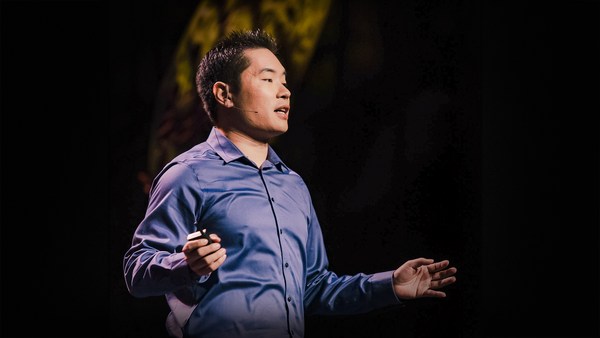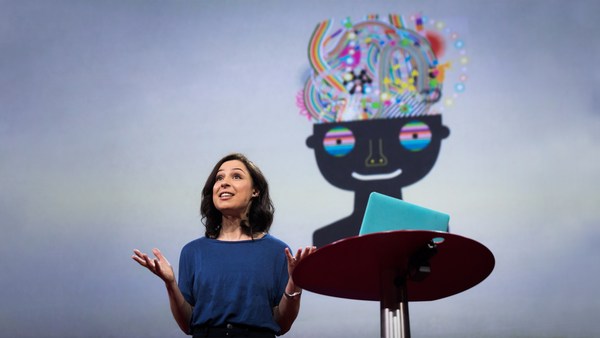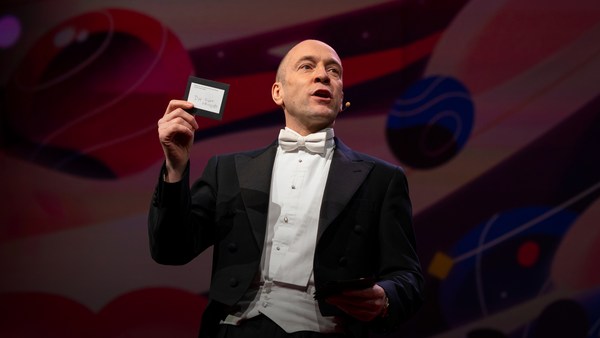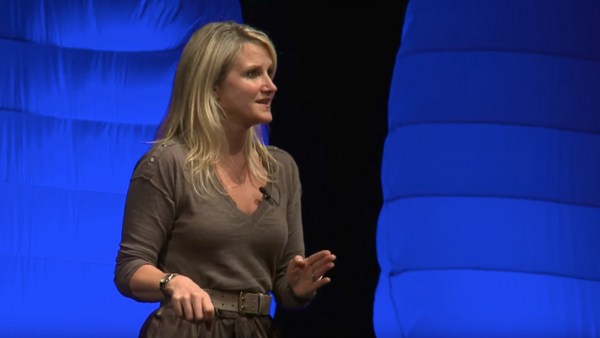The creative process -- you know this -- from the first idea to the final product, is a long process. It's super-iterative, lots of refinement, blood, sweat, tears and years. And we're not saying you're going to go out for a walk and come back with the Sistine Chapel in your left hand. So what frame of the creative process did we focus on? Just this first part. Just brainstorming, coming up with a new idea. We actually ran four studies with a variety of people. You were either walking indoors or outdoors. And all of these studies found the same conclusion. I'm only going to tell you about one of them today.
One of the tests we used for creativity was alternate uses. In this test, you have four minutes. Your job is to come up with as many other ways to use common everyday objects as you can think of. So, for example, what else would you do with a key, other than to use it for opening up a lock? Clearly, you could use it as a third eyeball for a giraffe, right? Maybe. That's sort of interesting, kind of new. But is it creative? So people came up with as many ideas as they could, and we had to decide: Is this creative or not?
The definition of creativity that a lot of people go with is "appropriate novelty." For something to be appropriate, it has to be realistic, so unfortunately, you can't use a key as an eyeball. Boo! But "novel," the second thing, is that nobody had to have said it. So for us, it had to be appropriate first, and then for novelty, nobody else in the entire population that we surveyed could have said it. So you might think you could use a key to scratch somebody's car, but if somebody else said that, you didn't get credit for it. Neither of you did. However, only one person said this: "If you were dying and it were a murder mystery, and you had to carve the name of the murderer into the ground with your dying words." One person said this.
(Laughter)
And it's a creative idea, because it's appropriate and it's novel.
You either did this test and came up with ideas while you were seated or while you were walking on a treadmill.
(Laughter)
They did the test twice, with different objects. Three groups: the first group sat first and then sat again for the second test. The second group sat first and then did the second test while walking on a treadmill. The third group -- and this is interesting -- they walked on the treadmill first, and then they sat. OK, so the two groups that sat together for the first test, they looked pretty similar to each other, and they averaged about 20 creative ideas per person. The group that was walking on the treadmill did almost twice as well. And they were just walking on a treadmill in a windowless room. Remember, they took the test twice. The people who sat twice for that second test didn't get any better; practice didn't help. But these same people who were sitting and then went on the treadmill got a boost from walking. Here's the interesting thing. The people who were walking on the treadmill still had a residue effect of the walking, and they were still creative afterwards. So the implication of this is that you should go for a walk before your next big meeting and just start brainstorming right away.
We have five tips for you that will help make this the best effect possible. First, you want to pick a problem or a topic to brainstorm. So, this is not the shower effect, when you're in the shower and all of a sudden, a new idea pops out of the shampoo bottle. This is something you're thinking about ahead of time. They're intentionally thinking about brainstorming a different perspective on the walk.
Secondly -- I get asked this a lot: Is this OK while running? Well, the answer for me is that if I were running, the only new idea I would have would be to stop running, so ...
(Laughter)
But if running for you is a comfortable pace, good. It turns out, whatever physical activity is not taking a lot of attention. So just walking at a comfortable pace is a good choice.
Also, you want to come up with as many ideas as you can. One key of creativity is to not lock on that first idea. Keep going. Keep coming up with new ones, until you pick one or two to pursue.
You might worry that you don't want to write them down, because what if you forget them? So the idea here is to speak them. Everybody was speaking their new ideas. So you can put your headphones on and record through your phone and then just pretend you're having a creative conversation, right? Because the act of writing your idea down is already a filter. You're going to be like, "Is this good enough to write down?" And then you write it down. So just speak as many as you can, record them and think about them later.
And finally: don't do this forever. Right? If you're on the walk and that idea's not coming to you, come back to it later at another time.
I think we're coming up on a break right now, so I have an idea: Why don't you grab a leash and take your thoughts for a walk?
Thank you.
(Applause)





